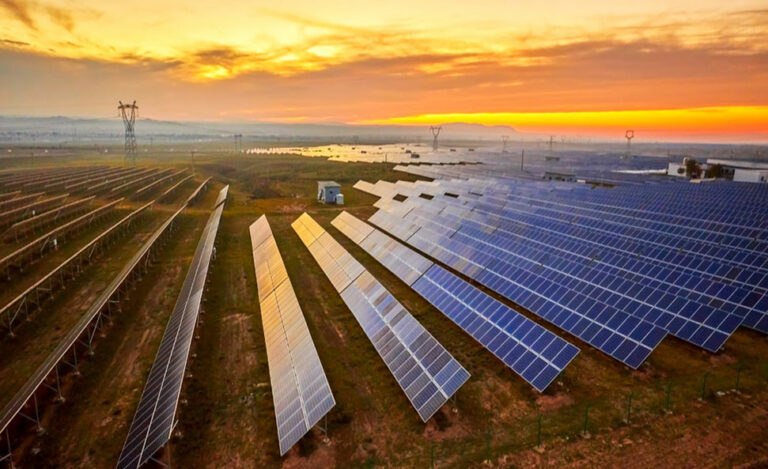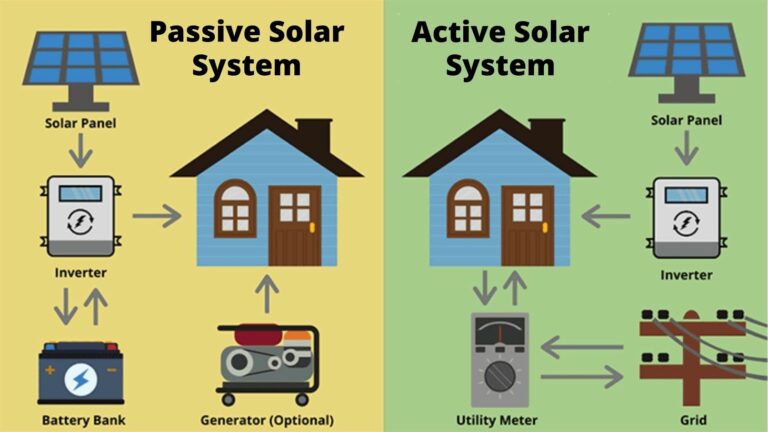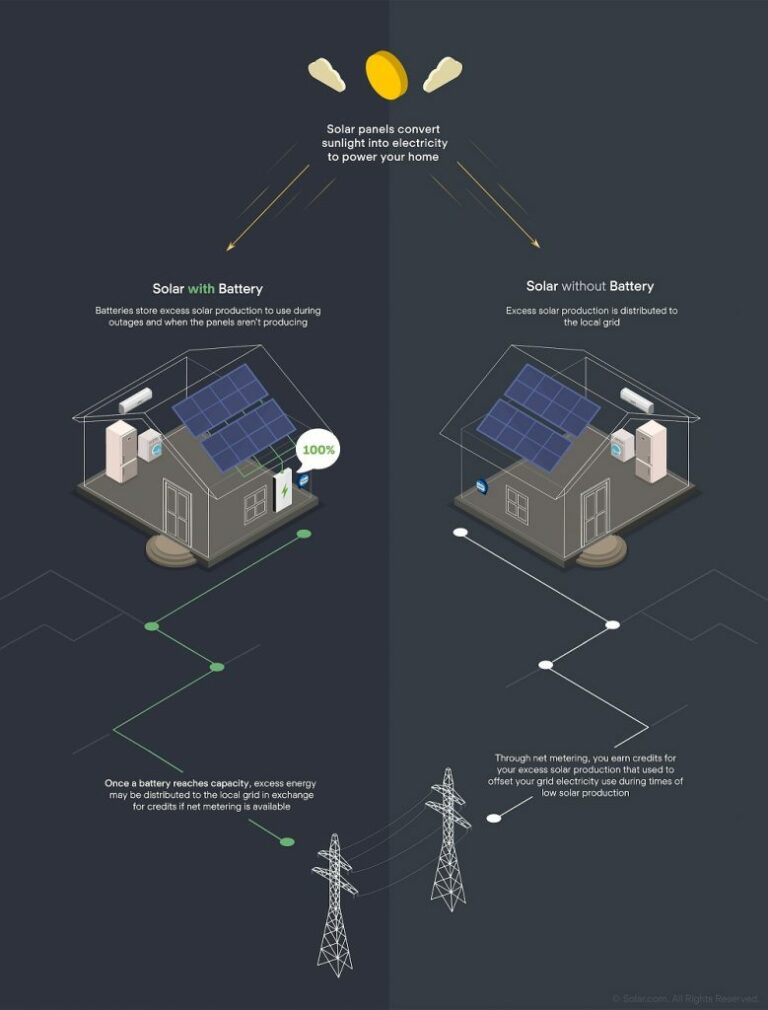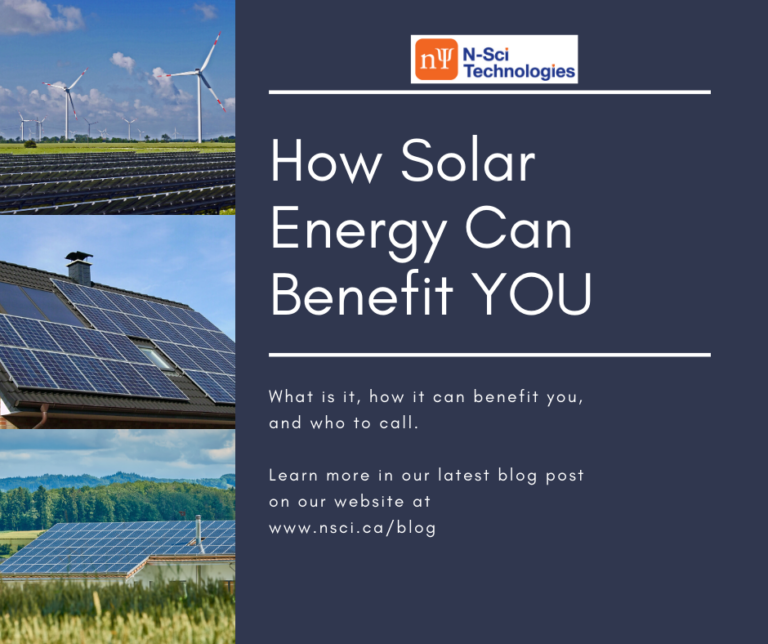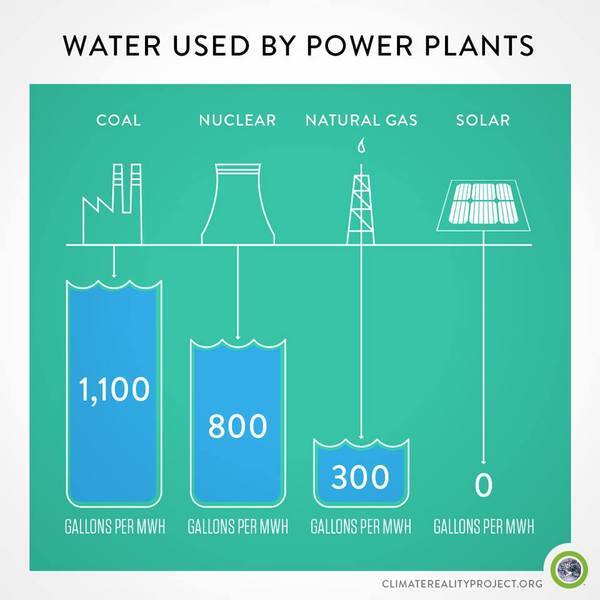What Are The Disadvantages Of Solar Energy?
Have you ever wondered about the disadvantages of solar energy? Well, you’re in the right place. Today, we’ll explore the not-so-sunny side of this popular renewable energy source.
Now, don’t get me wrong—solar energy has numerous benefits and is a great option for transitioning to a cleaner future. However, like any other technology, it has its drawbacks that we need to consider.
In this article, we’ll dive into some of the challenges associated with solar energy and discuss why it may not be a perfect solution for every situation. So, let’s shine a light on the disadvantages of solar energy and gain a better understanding of its limitations.
Remember, while solar energy is an amazing source of power, it’s crucial to consider all aspects before making any decisions. Now, let’s get started and uncover the downsides of solar energy.
Solar energy has various advantages as an alternative source of power, such as being environmentally friendly and reducing electricity bills. However, like any other energy source, it also has some disadvantages. One of the disadvantages of solar energy is the high initial cost of installation. Additionally, solar panels require a lot of space and may not be suitable for every location. Another drawback is that solar energy generation is dependent on sunlight availability. Despite these drawbacks, solar energy remains an important and sustainable option for the future.
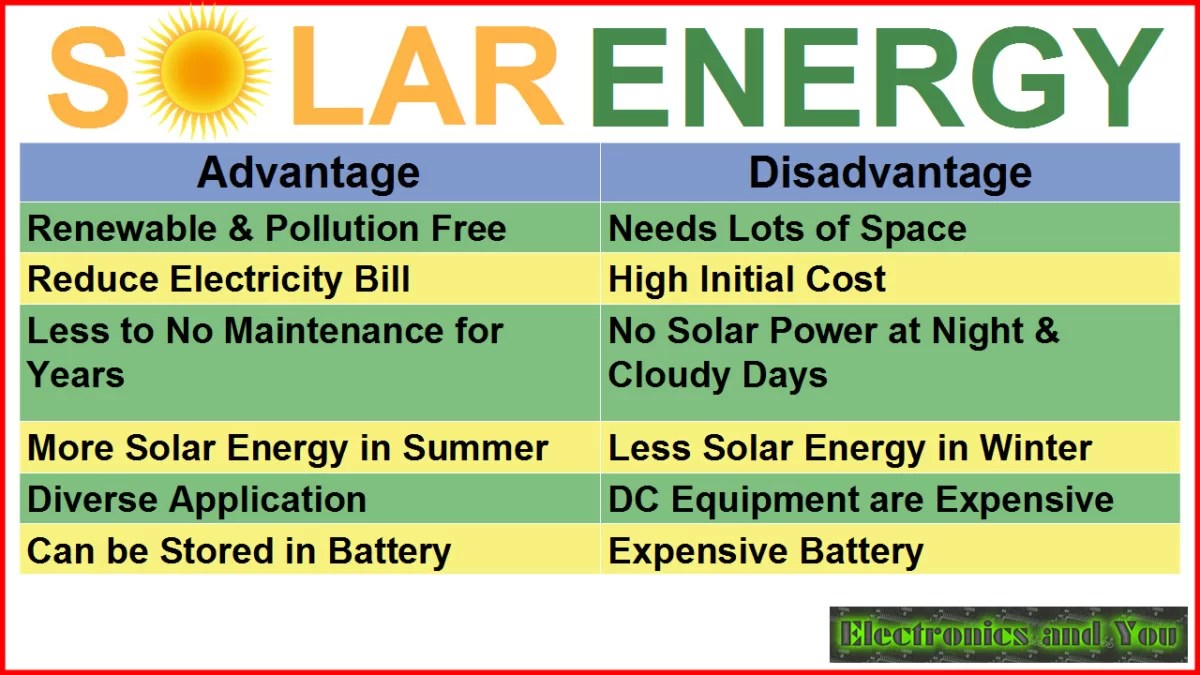
The Disadvantages of Solar Energy: Exploring the Challenges of Harnessing the Sun’s Power
Solar energy has gained significant traction in recent years as a renewable and environmentally friendly source of power. However, like any other form of energy, there are potential downsides and challenges associated with harnessing the sun’s immense power. In this article, we will delve into the disadvantages of solar energy, exploring the limitations and drawbacks that come with its usage. By understanding these challenges, we can make informed decisions about the role of solar energy in our energy systems.
1) Intermittent Power Generation
One of the major disadvantages of solar energy is its inherent intermittency. Solar power generation is dependent on sunlight, which means that energy production can be limited during cloudy days or at night. While advancements in energy storage systems have partially mitigated this issue, providing a way to store excess power generated during the day for use at night, it remains a challenge to achieve consistent power supply solely from solar energy.
Furthermore, seasonal variations and geographical factors can impact energy generation. Regions with shorter daylight hours or frequent cloudy conditions may experience lower solar energy output. This intermittent nature of solar power poses challenges for meeting continuous and high energy demands, particularly in areas heavily reliant on solar energy.
2) High Initial Costs
Another disadvantage of solar energy is the high upfront costs associated with installing solar panels and other equipment required for harnessing solar power. While the prices of solar panels have decreased over the years, the initial investment required can still be significant, deterring many individuals and businesses from adopting solar energy solutions.
Additionally, the installation process can be complex and time-consuming, requiring the involvement of professionals. This further adds to the overall costs. While government incentives and subsidies are available in some regions, the financial barriers to entry can still be a roadblock for many potential users of solar energy.
3) Environmental Impact of Production
While solar energy itself is clean and emits no greenhouse gases during operation, the production and disposal of solar panels can have an environmental impact. The manufacturing process involves the use of various raw materials, including silicon, glass, and metals, which require extraction and processing. These processes can result in the release of pollutants and contribute to environmental degradation.
Furthermore, solar panels have a limited lifespan. Once they reach the end of their usable life, they need to be disposed of properly to avoid further environmental harm. While recycling efforts are increasing, the disposal of solar panels is still a challenge. Improper disposal can lead to the leaching of hazardous materials into the environment, negating some of the environmental benefits of solar energy.
4) Land and Space Requirements
Another limitation of solar energy is the significant land and space requirements for large-scale implementation. Solar power plants and arrays need vast areas to accommodate the installation of solar panels or concentrated solar power systems. This can be a challenge in densely populated regions with limited available land or in areas where preserving the natural landscape is a priority.
Additionally, rooftop solar installations require ample space and unobstructed access to sunlight. Not all buildings or structures have the suitable conditions for effective solar panel installation, limiting the scalability and accessibility of solar energy in some areas.
5) Dependence on Weather Conditions
The efficiency of solar energy generation is heavily reliant on favorable weather conditions. Cloudy or overcast days can significantly reduce the output and efficiency of solar panels. This dependence on weather conditions introduces both unpredictability and limitations to the reliability of solar energy as a power source.
In regions with consistently cloudy or rainy climates, the energy generation potential of solar panels may be significantly lower than areas with more sunshine. This can pose challenges for areas looking to rely heavily on solar power, as the energy output may not meet the demands during extended periods of unfavorable weather.
6) Limited Energy Density
Solar energy has relatively low energy density compared to conventional energy sources such as fossil fuels. The amount of electricity that can be generated from a given solar panel area is limited. This means that large-scale solar installations are required to generate significant amounts of power, further accentuating the land and space requirements.
While advancements in solar panel technology have improved energy conversion efficiency, the overall energy density of solar power remains relatively low compared to other sources. This can limit the application of solar energy as the sole source of power for high-energy-demand industries or densely populated urban areas with limited available space for solar panel installations.
7) Dependency on Battery Technology
Energy storage is a critical component of solar energy systems to overcome intermittent power generation. While batteries and energy storage systems have improved over the years, the technology still presents challenges. The cost of energy storage remains high, and the efficiency and lifespan of batteries can be limiting factors for widespread adoption of solar energy.
Moreover, the environmental impact of battery production and disposal, as well as the reliance on raw materials such as lithium and cobalt, raises concerns regarding the sustainability and scalability of energy storage solutions. Further advancements and innovations in battery technology are needed to address these challenges and make solar energy more reliable and accessible.
The Future of Solar Energy: Overcoming Challenges and Moving Forward
Despite the disadvantages and challenges associated with solar energy, it continues to hold promise as a renewable and sustainable source of power. Ongoing research and development efforts are focused on improving the efficiency of solar panels, reducing costs, and developing more advanced energy storage systems.
6) Integration with Other Energy Sources
One potential solution to overcome the intermittency of solar energy is to integrate it with other renewable energy sources, such as wind or hydroelectric power. By diversifying the energy mix, it is possible to create a more reliable and stable power supply. Combined with advanced energy management systems, this integration can help address the limitations of solar energy and ensure continuous power availability.
7) Technological Innovations
The future of solar energy lies in technological innovations and breakthroughs. Advancements in materials, such as perovskite-based solar cells, hold the promise of increased efficiency and reduced costs. Additionally, research is ongoing in areas such as solar concentrators, solar thermal storage, and nanotechnology, which could revolutionize the solar energy industry.
8) Policy Support and Funding
Government policies and incentives play a crucial role in promoting the adoption and growth of solar energy. Targeted financial incentives, tax credits, and favorable regulations encourage individuals and businesses to invest in solar power systems. Continued support from policymakers can drive down costs and make solar energy more accessible to a wider range of consumers.
Furthermore, public and private funding for research and development in solar energy technologies can accelerate the pace of innovation, leading to more efficient solar panels, improved energy storage solutions, and advancements in other areas related to solar power generation.
In conclusion, while solar energy has its limitations and challenges, continued advancements in technology, supportive policies, and greater understanding of its drawbacks can pave the way for a future where solar energy becomes even more viable and accessible. By recognizing and addressing the disadvantages, we can work towards harnessing the full potential of this renewable energy source and create a sustainable energy future.
Key Takeaways:
- Solar energy is dependent on the availability of sunlight.
- The initial cost of installing solar panels can be expensive.
- Solar panels require a large amount of space for installation.
- Cloudy weather and pollution can reduce the efficiency of solar panels.
- The production of solar panels can have negative environmental impacts.
Frequently Asked Questions
Curious about the drawbacks of solar energy? Here are answers to some common questions:
Are there any downsides to using solar energy?
While solar energy has many benefits, it also comes with a few disadvantages. One of the main downsides is the initial high cost of installation. The equipment and installation expenses for solar panels can be quite significant. However, it’s important to note that these costs are gradually decreasing as technology advances and solar energy becomes more mainstream.
Another disadvantage of solar energy is its intermittent nature. Solar panels produce electricity only when the sun is shining, which means they are not reliable during nighttime or cloudy days. To overcome this, integrating solar energy systems with battery storage can help store excess energy during sunny periods for use when the sun is not available.
Is solar energy suitable for all areas?
While solar energy can be used in most areas, its efficiency can vary depending on factors such as location and climate. Regions with less sunlight or a higher number of cloudy days may not fully maximize the potential of solar energy. Additionally, areas with limited space can also pose challenges for installing a sufficient number of solar panels. However, technological advancements, such as more efficient solar panels and solar tracking systems, are helping to overcome some of these obstacles.
It’s also important to consider local regulations and restrictions that may affect the installation of solar panels. Some areas may have zoning or homeowner association (HOA) restrictions that make it difficult to install solar energy systems. Before investing in solar, it’s recommended to research and consult with local authorities to ensure compliance with any regulations.
Are there any environmental concerns associated with solar energy?
While solar energy is generally considered environmentally friendly, there are a few potential concerns to be aware of. The manufacturing process of solar panels can involve the use of potentially harmful chemicals and materials. However, the industry has made significant progress in reducing the environmental impact of manufacturing by implementing more sustainable practices and recycling programs for end-of-life panels.
Solar farms and large-scale installations can also have an impact on local ecosystems. These installations can require significant land use, potentially disrupting natural habitats or agricultural areas. Careful planning and consideration of environmental impacts are important when implementing large-scale solar energy projects.
What are the limitations of solar energy storage?
Solar energy storage is crucial for ensuring a constant power supply, especially when the sun is not shining. However, there are a few limitations to consider. The cost of energy storage systems, such as batteries, can be quite high, making it an additional expense for solar energy users. Fortunately, as demand for energy storage increases, costs are expected to decrease.
Another limitation is the efficiency of energy storage systems. Some energy can be lost during the storage and retrieval process. Additionally, current energy storage technologies may have limited capacity, which can restrict the amount of energy that can be stored. Research is ongoing to develop more efficient and scalable energy storage solutions to overcome these limitations.
How does solar energy impact the electrical grid?
Solar energy can have both positive and negative impacts on the electrical grid. On the positive side, solar energy can reduce strain on the grid by providing clean, renewable energy directly to homes and businesses. This can result in a lower demand for electricity from traditional power plants.
However, the intermittent nature of solar energy can also pose challenges for grid operators. Since solar panels produce energy only when the sun is shining, sudden shifts in solar power generation can cause fluctuations in the grid. To address this, grid operators are implementing advanced grid management techniques, such as demand-response programs and energy storage integration, to ensure grid stability and balance the intermittent nature of solar energy.
Summary
Solar energy has many advantages, but it also has a few disadvantages. One major drawback is that solar panels are expensive to install, which may make it difficult for some people to afford. Additionally, solar energy is dependent on the weather, so it may not be as reliable in areas with frequent cloudy days. Another disadvantage is that solar panels take up a lot of space, which can be a challenge in urban areas or on smaller properties. Lastly, the production of solar panels can have negative environmental impacts, as it requires the use of certain chemicals.
Despite these disadvantages, solar energy still offers many benefits. It is a clean and renewable source of energy that can help reduce carbon emissions and combat climate change. As technology continues to improve, the cost of solar panels is also decreasing, making it more accessible to a wider range of people. While solar energy may not be perfect, it is a promising and sustainable option for our future energy needs.

